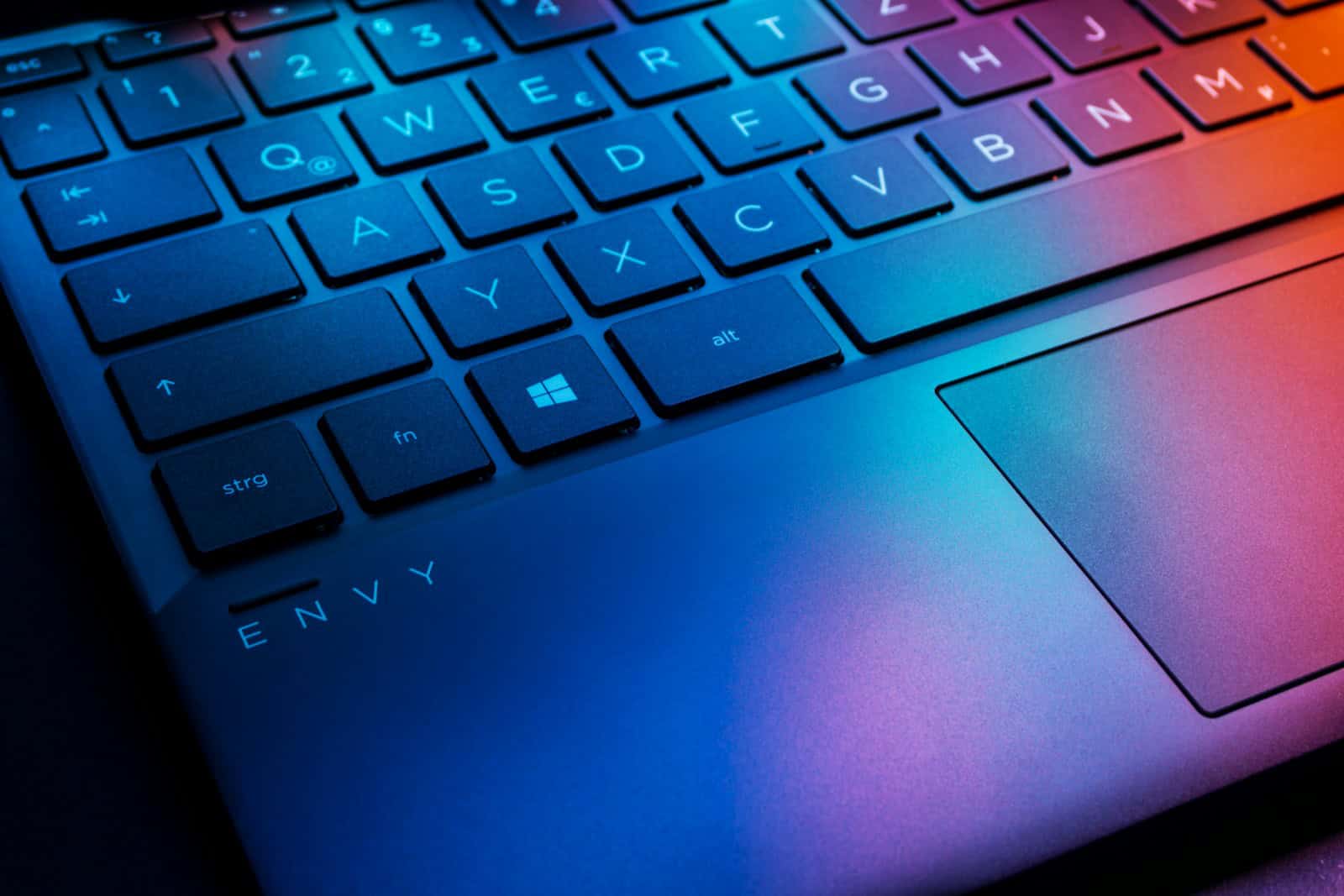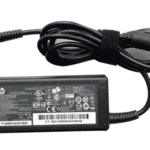Is your HP laptop touchpad acting up and making navigation difficult? This frustrating issue affects many users but is often fixable with the right approach. Most HP laptop touchpad problems can be solved by checking touchpad settings, updating drivers, or performing a simple system restart.
When your touchpad stops working, it’s easy to panic. But before rushing to a repair shop, try some basic troubleshooting steps. The problem might be as simple as accidentally disabling the touchpad with a function key or having outdated drivers that need refreshing.
Sometimes external devices like mice can interfere with touchpad function. Other times, the issue lies in your system settings. Check in Settings > Devices > Touchpad to make sure it’s enabled, or look in Device Manager for driver issues that might need addressing.
Tips To Fix An HP Laptop Touchpad That Is Not Working
If your HP laptop touchpad suddenly stops responding, don’t panic—this is a common issue with several potential fixes. Whether it’s due to a disabled setting, outdated driver, or hardware glitch, here’s a step-by-step guide to get your touchpad working again.
Basic Checks First
1. Make Sure It’s Not Disabled
- Double tap the top-left corner of the touchpad. Many HP laptops let you enable/disable the touchpad with a double-tap on that small icon.
- If a light appears, it often means the touchpad is disabled.
2. Use the Function Key
- Try pressing
Fn + F6,Fn + F9, or another F-key with a touchpad icon (varies by model). This combo can toggle the touchpad on/off.
Deeper Fixes
3. Check Touchpad Settings in Windows
- Go to Settings > Devices > Touchpad.
- Make sure the touchpad is turned On.
- Adjust sensitivity or gestures here as well.
4. Use Device Manager to Re-enable the Touchpad
- Press
Windows + Xand select Device Manager. - Expand “Mice and other pointing devices.”
- Right-click your touchpad (it may say Synaptics, ELAN, or HID-compliant touchpad) and choose Enable.
- If it’s already enabled, choose Disable and then Enable again to refresh it.
5. Update or Reinstall the Driver
- In Device Manager, right-click your touchpad and select Update driver.
- Choose Search automatically to let Windows find updates.
- If that doesn’t work, uninstall the device and then restart your laptop—Windows will attempt to reinstall it automatically.
BIOS & UEFI Settings
6. Check BIOS Touchpad Setting
- Restart your laptop and press Esc, F10, or F2 (depends on model) to enter the BIOS/UEFI.
- Look for a Touchpad or Internal Pointing Device setting and make sure it’s Enabled.
Other Helpful Tips
7. Try an External Mouse
- Plug in a USB mouse to see if your system recognizes external pointing devices. This can help narrow down whether the issue is hardware-related.
8. Boot Into Safe Mode
- If your touchpad works in Safe Mode, there’s likely a software conflict on your system—possibly a third-party app interfering with touchpad function.
9. HP Support Assistant
- Open the HP Support Assistant app (pre-installed on most HP laptops) and run a Hardware Diagnostics scan.
Still Not Working?
If nothing helps, the issue might be hardware-related:
- Loose touchpad connection inside the laptop
- Defective touchpad module
- You’ll likely need to take it to an HP service center or authorized repair shop.
Most HP touchpad issues are fixable with a few quick changes in settings or drivers. Try the easiest options first—like double-tapping the corner—and work your way down. A working touchpad could just be a few clicks away.
Key Takeaways
- Restart your laptop and check for a touchpad disable button (often F5 or F7) as these simple fixes solve many touchpad problems.
- Verify touchpad settings in Windows Settings and update or reinstall touchpad drivers through Device Manager.
- If software fixes fail, your touchpad may have hardware issues requiring professional support from HP.
Identifying the Issue
Before attempting to fix your HP laptop touchpad, it’s important to determine exactly what’s causing the problem. This starts with checking if the issue is with hardware or software, and understanding how the touchpad switch and indicator light can help diagnose the problem.
Hardware Versus Software Malfunction
When an HP laptop touchpad stops working, it could be either a hardware or software issue. To tell the difference, try connecting an external mouse. If the external mouse works fine, the problem is likely with the touchpad hardware or its driver.
Check for physical damage on the touchpad surface. Cracks, dents, or liquid damage often point to hardware problems that may require professional repair.
For software issues, look at your Device Manager to see if the touchpad driver has a yellow exclamation mark. This indicates driver problems. Another sign of software issues is if the touchpad worked before a recent Windows update or software installation.
Many touchpad problems stem from corrupted driver files. Simple troubleshooting like restarting your laptop can sometimes fix this by clearing the RAM.
Touchpad Switch and Indicator Light
Most HP laptops have a quick way to turn the touchpad on and off. Look for a small touchpad icon on one of the function keys (often F5, F7, or F9). You’ll need to press the Fn key together with this function key to toggle the touchpad.
Some models have a small indicator light near the touchpad. When the touchpad is disabled, this light may glow orange or amber. If it’s enabled, the light might be blue or off completely.
Double-tapping the top left corner of some HP touchpads can also toggle it on/off. This feature is sometimes enabled by default and can be accidentally triggered.
If you’re unsure which key controls your touchpad, check your laptop’s manual or look for small icons on the function keys that resemble a touchpad or finger tapping.
Initial Troubleshooting Steps
When your HP laptop touchpad stops working, there are several quick fixes you can try before seeking professional help. These steps can often resolve common issues with minimal effort.
Basic Checks and Reboots
First, check if your touchpad is accidentally disabled. Many HP laptops have a dedicated touchpad on/off button or a function key combination (usually Fn + F7 or similar). Look for a small touchpad icon on your keyboard.
Restart your laptop, which often fixes temporary glitches. This clears the RAM and gives your system a fresh start.
If that doesn’t work, try a hard reset:
- Turn off your laptop
- Disconnect all external devices
- Remove the battery (if possible)
- Hold the power button for 30 seconds
- Reconnect the battery and power
Check your BIOS settings by tapping F10 during startup. Once in BIOS, try moving the cursor to see if the touchpad works there. If it does, the issue is likely software-related.
Some HP users report success by changing touchpad settings in BIOS from I2C to PS2.
Using an External Mouse
Connect an external mouse to your laptop while troubleshooting. This gives you control over your computer even when the touchpad isn’t working.
USB mice typically work right away without special setup. This “plug and play” feature makes them ideal for emergency situations.
With an external mouse connected, you can more easily:
- Access Control Panel settings
- Update drivers
- Run troubleshooting tools
- Adjust touchpad settings
The external mouse can also help determine if the issue is hardware or software related. If both the touchpad and external mouse don’t work, you likely have a more serious system problem.
Keep a basic wired mouse in your laptop bag as a backup solution for touchpad failures.
Software Fixes
When your HP laptop touchpad stops working, software issues are often the culprit. These problems range from simple settings changes to more complex driver conflicts that need specific solutions.
Operating System Issues
Windows 10 and 11 sometimes disable the touchpad automatically or change settings without user knowledge. Check if your touchpad is enabled by pressing the function key (Fn) plus the touchpad key (often F7 or F9) on your keyboard. This keyboard shortcut toggles the touchpad on and off.
You can also check touchpad settings in Windows:
- Open Settings > Devices > Touchpad (Windows 10)
- Open Settings > Bluetooth & devices > Touchpad (Windows 11)
Make sure the touchpad toggle is set to “On” and check sensitivity settings while you’re there.
Some HP laptops have built-in software that might override Windows settings. Look for HP-specific touchpad management software in your programs list.
If your touchpad works during startup but fails after Windows loads, the problem likely lies with Windows settings rather than hardware issues.
Touchpad Driver Update
Outdated or corrupted drivers often cause touchpad problems. You can update your touchpad driver through several methods:
Using Device Manager:
- Right-click the Start button and select Device Manager
- Expand “Mice and other pointing devices”
- Right-click your touchpad device and select “Update driver”
- Choose to search automatically for updated driver software
Using HP Support Assistant:
HP’s built-in support tool can find and install the correct drivers specifically for your laptop model.
If updating doesn’t work, try uninstalling the driver completely:
- In Device Manager, right-click the touchpad and select “Uninstall device”
- Restart your computer to let Windows reinstall the driver automatically
For persistent issues, download the latest driver directly from HP’s support website by entering your laptop’s model number.
Windows Update Implications
Windows updates can sometimes cause touchpad malfunctions by installing incompatible drivers. After a recent Windows update, your touchpad might stop working properly or behave erratically.
To fix problems caused by Windows updates:
Roll back the touchpad driver:
- Open Device Manager
- Find your touchpad under “Mice and other pointing devices”
- Right-click and select “Properties”
- Go to the “Driver” tab
- Click “Roll Back Driver” if available
If rollback isn’t available, try system restore to a point before the update.
Microsoft occasionally releases patches for known touchpad issues. Make sure your system is up-to-date with the latest quality updates.
Some HP users report that changing the touchpad settings in BIOS from I2C to PS2 (as mentioned in one search result) can resolve issues after Windows updates.
Third-Party Software Conflicts
Sometimes other programs interfere with your touchpad functionality. Antivirus software, gaming peripherals, or mouse management tools can cause conflicts.
Common culprits include:
- Gaming mouse software
- Custom keyboard applications
- Screen capture tools
- Some antivirus programs
Try starting Windows in Safe Mode to see if your touchpad works properly there. If it does, a third-party program is likely causing the problem.
To identify the problematic software:
- Open Task Manager (Ctrl+Shift+Esc)
- Check the Startup tab
- Disable startup items one by one
- Restart your computer after each change to identify which program is causing issues
Once identified, you can either uninstall the conflicting program, update it to a newer version, or adjust its settings to prevent interference with your touchpad.
Touchpad Settings Adjustment
Sometimes a non-working touchpad can be fixed by adjusting its settings in Windows. Your HP laptop offers several options to customize how your touchpad responds to touch and gestures.
Accessing Touchpad Settings
There are several ways to access touchpad settings on your HP laptop. The quickest method is through the Windows search bar. Click the search icon in the taskbar, type “touchpad settings,” and press Enter. This opens the touchpad configuration page.
You can also reach these settings through the Device Manager:
- Right-click on the Windows Start button
- Select “Device Manager” from the menu
- Expand the “Mice and other pointing devices” category
- Right-click on the TouchPad device
- Select “Properties” to access settings
If you’re having trouble with a disabled touchpad, try pressing the function (Fn) key plus the touchpad toggle key (often F5 or F7, marked with a touchpad icon) on your keyboard. This keyboard shortcut frequently resolves simple touchpad issues.
Customizing Sensitivity and Gestures
Once in the touchpad settings, you can adjust how your touchpad responds. Windows allows you to change sensitivity levels to match your preferences. Higher sensitivity means lighter touches will register, while lower sensitivity requires firmer pressure.
For better control, adjust these common settings:
- Tap sensitivity: Change how hard you need to tap for clicks
- Scroll speed: Adjust how quickly content moves when using two-finger scrolling
- Multi-finger gestures: Enable or disable gestures like pinch-to-zoom or three-finger swipes
HP laptops often include special gesture controls beyond Windows defaults. Look for an “Advanced” section in your touchpad settings to find these options. Some HP models have their own touchpad software with extra customization features.
Try disabling and re-enabling your touchpad in these settings if it’s not responding. This simple action sometimes fixes connection issues between the touchpad hardware and software.
BIOS Configuration
Sometimes touchpad issues on HP laptops can be solved by adjusting settings in the BIOS. The BIOS controls basic hardware functions before the operating system loads, and it may hold the key to fixing your touchpad problems.
Entering BIOS Setup
To access the BIOS on an HP laptop, you need to press a specific key during startup. Turn off your computer completely. Press the power button to turn it on, then immediately start pressing the F10 key repeatedly until the BIOS setup appears.
If F10 doesn’t work, try F2 or Esc instead. Some newer HP models use the Esc key to access a startup menu first, then you select F10 for BIOS.
Make sure you press the key right after turning on the computer. If you see the Windows logo, you’ve waited too long and need to restart.
Touchpad Settings in BIOS
Once in the BIOS, look for touchpad settings in the “Main” or “System Configuration” sections. Some HP laptops have a specific option to change the touchpad mode between I2C and PS2.
If your touchpad isn’t working, try changing this setting. For example, if it’s set to I2C, switch to PS2 and restart your computer. This often solves the problem when Windows doesn’t detect the touchpad properly.
Some BIOS versions also have an option to enable or disable the touchpad completely. Make sure this option is set to “Enabled” if available.
After making changes, press F10 to save and exit the BIOS. Your computer will restart, and hopefully your touchpad will start working again.
Device Manager and Drivers
When your HP laptop touchpad stops working, checking the device status and drivers in Windows Device Manager should be your first troubleshooting step. Many touchpad problems stem from driver issues that can be fixed with a few clicks.
Checking Device Status
To check if your touchpad is recognized by Windows, open Device Manager by pressing Windows key + X and selecting “Device Manager” from the menu. Look under the “Mice and other pointing devices” category for your touchpad device. If you don’t see it listed, click on “View” in the top menu and select “Show hidden devices” to reveal disabled devices.
Sometimes the touchpad might appear with a yellow warning icon, indicating a problem. Right-click on the device and select “Properties” to see specific error messages. The “Device status” field will tell you if the device is working properly or facing issues.
If the touchpad isn’t visible at all, it might be disabled in BIOS settings or through a keyboard shortcut (often Fn + F7 or similar).
Driver Version Verification
Checking your touchpad driver version helps identify outdated or corrupt drivers. In Device Manager, right-click your touchpad and select “Properties.” Navigate to the “Driver” tab to view details including:
- Driver version
- Driver date
- Provider information
For HP laptops, ELAN and Synaptics are common touchpad manufacturers. Compare your installed version with the latest available on HP’s support website for your specific model.
To find your laptop model, press Windows key + X and select “System.” Look for your model number under device specifications.
If your driver is outdated, select “Update Driver” from the Properties window. Choose “Search automatically for updated driver software” or download directly from HP’s website for better results.
Manual Driver Installation
When automatic driver updates fail, manual installation might be necessary. First, download the correct touchpad driver from HP’s support website for your specific laptop model.
Steps for manual installation:
- Go to Device Manager and right-click your touchpad device
- Select “Uninstall device” (check “Delete the driver software” if available)
- Restart your computer
- If Windows doesn’t reinstall automatically, double-click the downloaded driver file
- Follow the installation wizard instructions
If your touchpad still doesn’t appear in Device Manager, try this BIOS fix that works for many HP laptops: restart your computer and press F10 repeatedly to enter BIOS setup. Navigate to the Main tab and change Touchpad settings from “I2C” to “PS2” mode, then save and exit.
For stubborn issues, creating a system restore point before trying advanced fixes is recommended. This ensures you can revert changes if something goes wrong.
Support and Repair Options
When your HP laptop touchpad stops working, there are several support channels and repair options available. HP offers both self-service troubleshooting resources and professional repair services depending on the nature of the problem.
HP Support Resources
HP provides multiple ways to get help with touchpad issues. The HP Support website offers detailed troubleshooting guides specific to your laptop model. You can find step-by-step instructions for common touchpad problems, including driver updates and settings adjustments.
The HP Virtual Assistant can quickly diagnose basic touchpad issues through automated tests. For more complex problems, HP’s live chat support connects you with technicians who can guide you through advanced troubleshooting.
HP also maintains active support forums where other users share solutions. Many HP Pavilion owners have posted successful fixes for touchpad problems that might help with your specific issue.
If your laptop is under warranty, HP’s phone support can arrange for service if needed. Always have your product serial number ready when contacting support.
Repair for Hardware Failure
When troubleshooting confirms a hardware failure, repair becomes necessary. For HP laptops under warranty, repairs are typically free. Contact HP Support to verify your warranty status and arrange service.
HP offers several repair options:
- Mail-in service: Ship your laptop to an HP repair center
- Carry-in service: Take your laptop to an authorized service center
- On-site service: Available for some business models
For out-of-warranty HP Pavilion or other models, repair costs vary based on the specific touchpad problem. Simple reconnections might cost $50-100, while full touchpad replacement typically ranges from $100-200 depending on the model.
Third-party repair shops can be a cost-effective alternative, but choose certified technicians familiar with HP laptops. Many hardware failures can be fixed within 2-5 business days.
Frequently Asked Questions
HP laptop touchpad issues can be frustrating but are often fixable with simple troubleshooting methods. Most problems can be resolved by checking settings, restarting your device, or updating drivers.
How can I troubleshoot an unresponsive touchpad on my HP laptop?
First, try pressing the Fn key plus the function key that has a touchpad icon. This key combination often toggles the touchpad on and off.
Restart your laptop, which can solve many temporary issues. This clears your computer’s memory and gives the system a fresh start.
Check if the touchpad is disabled in Settings. Go to Settings > Devices > Touchpad and make sure it’s turned on.
What methods can resolve a touchpad freezing issue on an HP laptop?
Update your touchpad drivers through Device Manager. Right-click the Start button, select Device Manager, find Mice and other pointing devices, right-click your touchpad, and select Update driver.
Check for Windows updates that might fix compatibility issues. Go to Settings > Update & Security > Windows Update.
Try booting into Safe Mode to determine if a third-party program is causing the problem. If the touchpad works in Safe Mode, a software conflict likely exists.
Are there any shortcuts to re-enable a disabled touchpad on an HP laptop?
The most common shortcut is pressing the Fn key + the touchpad function key (often F5, F7, or F9, depending on your model).
Double-tapping the top left corner of the touchpad can enable it on some HP models, as mentioned in the search results.
Some HP laptops have a small indicator light near the touchpad that glows orange when disabled. Double-tap this area to toggle it back on.
How can I fix my HP laptop’s touchpad that stops working randomly?
Adjust the touchpad sensitivity settings. Go to Settings > Devices > Touchpad and modify the sensitivity slider.
Check power management settings. Go to Device Manager, find your touchpad, right-click and select Properties, then Power Management. Uncheck “Allow the computer to turn off this device to save power.”
Install the latest HP Support Assistant software from the HP website, which can help maintain proper drivers and settings.
What steps should I take if my HP laptop’s touchpad isn’t working after an OS upgrade?
Visit the HP Support website to download touchpad drivers specifically designed for your model and the new OS version.
Try entering BIOS during startup by pressing F10 repeatedly when restarting. As mentioned in the search results, check if the touchpad works in BIOS.
Run the Windows troubleshooter by going to Settings > Update & Security > Troubleshoot > Additional troubleshooters > Hardware and Devices.
Why does the touchpad on my HP laptop show an orange light and how can I fix it?
The orange light indicates that your touchpad is disabled. This is a feature, not a malfunction.
To enable it, double-tap the area where the orange light appears. This should toggle the touchpad back on and the light should turn off.
You can also try pressing the Fn key + the touchpad function key on your keyboard to enable it again.







